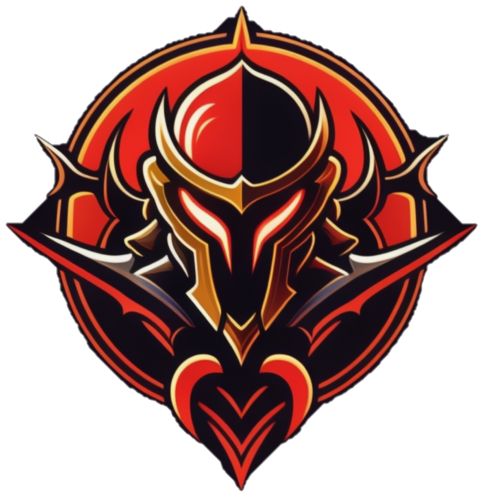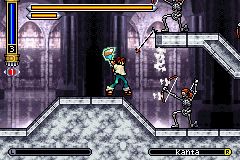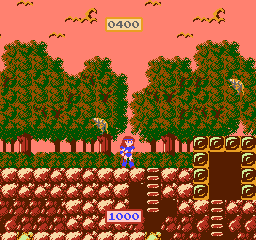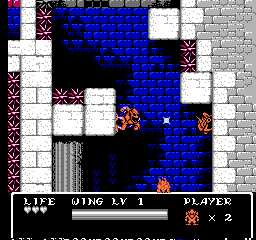Results
Shaman King: Master of Spirits
fantasy, pixel art, bright visuals
Shaman King: Master of Spirits for the Game Boy Advance is a turn-based role-playing game based on the popular anime and manga series of the same name. The game follows the story of Yoh Asakura, a young shaman who aims to become the Shaman King by winning the Shaman Fight, a tournament held every 500 years. One of the game's standout features is its extensive roster of playable characters, which includes not only Yoh and his friends but also numerous characters from the anime and manga series. Each character has unique abilities, spirits, and fighting styles, allowing for a diverse range of team compositions and strategies. The battle system incorporates elements from both traditional turn-based RPGs and fighting games. Players can engage in one-on-one battles or team battles, where they must strategically position their characters and plan their attacks. The game also features a unique "Oversoul" system, which allows characters to merge with their guardian spirits, granting them powerful abilities and transformations. In addition to the main story mode, Shaman King: Master of Spirits offers various side quests and optional content, providing plenty of opportunities for exploration and character development. The game also includes a multiplayer mode, allowing players to battle against each other using their customized teams. While the game follows the overall narrative of the anime and manga, it also features original story elements and scenarios, giving fans of the series a fresh perspective on the Shaman King universe. The game's graphics and audio stay true to the source material, capturing the distinctive art style and iconic soundtrack. Overall, Shaman King: Master of Spirits is a solid RPG experience that offers a unique blend of turn-based combat, strategic team-building, and faithful adaptation of the beloved Shaman King franchise.
The Wing of Madoola
fantasy, grindy, pixel art
The Wing of Madoola, released in 1986 for the Amstrad CPC and ZX Spectrum, is a unique and ambitious game that combines elements of side-scrolling action and open-world exploration. Developed by the small British studio Beam Software, the game stands out for its intricate level design, nonlinear gameplay, and surreal, dreamlike atmosphere. One of the game's most notable features is its vast, interconnected world, which encourages backtracking and exploration. The levels are not strictly linear, and players can often find alternate routes or hidden areas that lead to new challenges or power-ups. The game's world is also filled with bizarre creatures, twisted landscapes, and enigmatic structures that contribute to its surreal and otherworldly ambiance. The gameplay itself is a mix of platforming, combat, and puzzle-solving. Players control a winged protagonist who can fly, shoot projectiles, and interact with various objects and mechanisms. The combat system is relatively simple but requires precise timing and positioning, as enemies can come from multiple directions and attack patterns can be unpredictable. The game's difficulty is often cited as one of its defining traits. While the early levels serve as an introduction to the mechanics, the challenges quickly ramp up, requiring players to master precise jumps, intricate enemy patterns, and complex environmental puzzles. The game's cryptic nature and lack of explicit guidance add to the sense of mystery and challenge, as players must rely on their observation skills and intuition to progress. Despite its commercial and critical success upon release, The Wing of Madoola remains a relatively obscure title, known primarily to retro gaming enthusiasts and fans of the Amstrad CPC and ZX Spectrum scenes. However, its influence can be seen in later games that embraced nonlinear, exploratory gameplay and surreal, dreamlike atmospheres.
Gargoyle's Quest II
fantasy, pixel art, challenging
Gargoyle's Quest II, released in 1992 for the Game Boy, is a sequel to the original Gargoyle's Quest and a spin-off from the Ghosts 'n Goblins series. Unlike its predecessor, which was a straightforward platformer, Gargoyle's Quest II incorporates elements of action RPGs and Metroidvania-style exploration. The game takes place in the same world as its predecessor, but the story follows a different protagonist, a red gargoyle named Firebrand. The narrative revolves around Firebrand's quest to stop the resurrection of the powerful King Breager, who seeks to conquer the world. One of the standout features of Gargoyle's Quest II is its non-linear level design. The game world is interconnected, with various routes and paths that can be unlocked by acquiring new abilities or items. This encourages backtracking and exploration, as players must revisit previously inaccessible areas to progress. The combat system is significantly enhanced compared to the first game. Firebrand can now equip a variety of weapons and armor, each with unique attributes and abilities. This adds depth to the gameplay and allows for customization and strategic decision-making. Another notable aspect of Gargoyle's Quest II is its difficulty. The game is known for its challenging boss battles and intricate level design. Enemies are formidable, and players must use their wits and skills to overcome obstacles and navigate treacherous environments. Visually, the game features detailed sprite work and diverse environments, ranging from dense forests to underground caverns and ancient ruins. The soundtrack, composed by Kenichi Matsubara, is widely praised for its memorable melodies and atmospheric nature. While not as well-known as other Metroidvania classics, Gargoyle's Quest II has garnered a cult following among retro enthusiasts and is celebrated for its pioneering approach to non-linear exploration and RPG elements in a handheld game of its era.
Filters
Search Term
Properties
Platforms
Tags (include)
Tags (exclude)
Get Your Game Noticed
Advertise your game with MetroidvaniaDB and reach a community of people who know exactly what they're looking for:
Your game.
Native & Banner Ad Spots
Multi-week Discounts
Game Launch Packages
Discounts for Indie Developers



